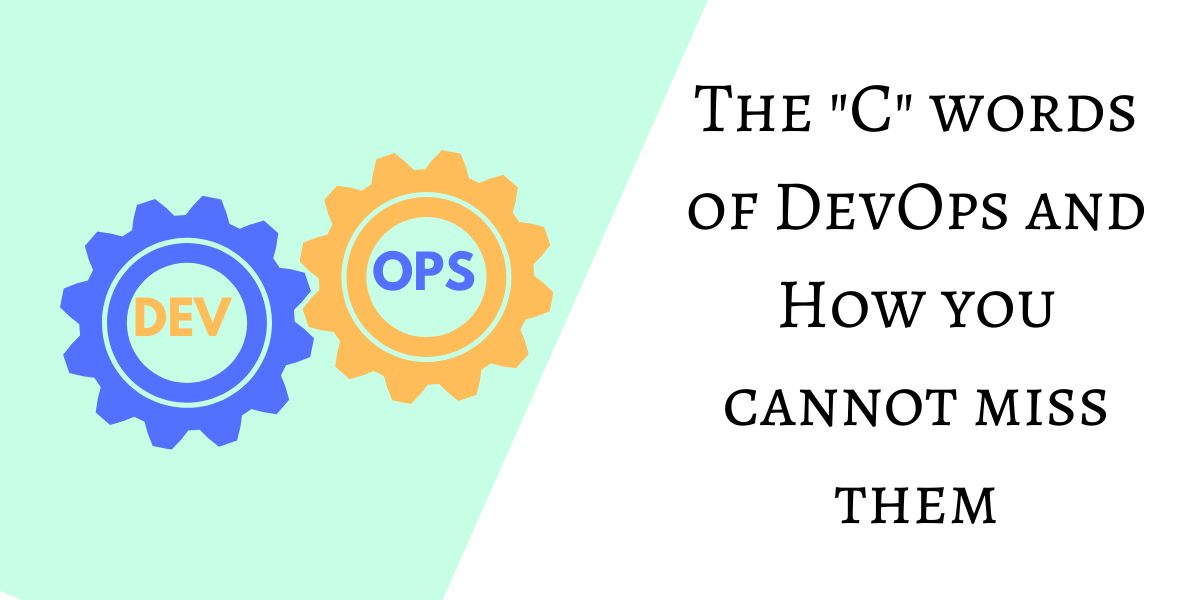The "C" words of DevOps and How you cannot miss them

Finding ways to make a business more effective and efficient is not an easy task. Suppose your organization provides software development services to the general public. In that case, you need to find a way to make this process quick and painless for your customers. The best way to reduce the number of errors and setbacks you face at the time of software development projects is to use DevOps methodologies.
In short, this methodology helps to focus on teamwork and practices like continuous delivery and testing. Some organizations think changing from an old traditional way of building product lifecycle to the DevOps approach is time-consuming and frustrating. While there are few bumps in the road initially, you will eventually realize how beneficial DevOps can be for your business.
So, here are the seven key practices of DevOps:
Centralized Configuration Management
Configuration management means standardizing resource enforcing and configurations their state across the whole IT infrastructure in an automated agile methodology. If several servers are running, then you need to make configuration changes in one directory. It is better to simply automate this process rather than do it manually. Simply set it up once and trigger it when needed again. You can easily configure all types of environments from a centralized place. There are few tools that are available to do these tasks like Puppet, Chef, etc.
Continuous Integration
The deployment process is a combination of many different dub processes like code versioning, development, deployment, testing, post-deployment tasks like shooting a mail to the concerned person or the team member, etc. DevOps practice aims to automate these tasks with tools like Bamboo, Clark, TeamCity, and Jenkins that help minimize human intervention in deployment. These tools help to save a lot of time and effort.
Automation Testing
Test the code and underlying infrastructure in an automated way instead of doing it manually. For this, some of the tools that include WebRat, Brynary, etc. can be used; automation means that the code is fed as an input basis. A final report specifies bug details and test cases generated. This is a good way of involving the Operations team in testing. Automation is accomplished by identifying the test cases and scenarios, selecting a suitable automation tool, running test cases, setting up test environments, and analyzing results.
Infrastructure as a code
Infrastructure as a code or IaC is an infrastructure management approach that makes Continuous DevOps and Delivery possible. It entails using scripts to automatically set the deployment process, including the virtual machines, networks, etc., to the required configuration regardless of its beginning stage. Without Infrastructure as a Code, engineers would have to treat each target environment individually, which becomes a hectic and challenging task. You may have many different environments for deployment, testing, and production use.
Having an environment configured as a code, you can test it by testing the source code itself and using a virtual machine that acts like a production environment to test early. Once the need to scale arises, the script can automatically set the needed number of environments to be consistent.
Continuous Delivery
Continuous Delivery ensures no errors or breakpoints in migrating the code from staging to any other environment. Suppose there is an error or bug in the production code. In that case, you can quickly fix it in real-time after passing the changes through the entire set of a delivery pipeline to the production environment without causing any significant loss to the production environment. Continuous Delivery (CD) also aims at making the whole infrastructure flexible enough so that the required changes can be quickly done to a specific environment without any restrictions.
Continuous Deployment and Versioning
Businesses can choose to automate the deployment flow from staging to production using software like Bamboo, Jenkins, Chef, etc. In continuous deployment, the code is automatically being deployed to the production environment. It passes all the test cases in the QA environment, followed by the UAT environment. Continuous versioning makes sure that multiple versions of the code are available at the specified places. This facilitates tracking bugs and reverting the code back to the previous version without any sort of hiccups.
Proactive Monitoring
Monitoring the infrastructure is essential, whether on a cloud or on a cloud data center. Tracking load time, query logs, and some other essential details can optimize application performance. A bug from the latest deployment can fail the entire application and required application checks. Proactive monitoring is essential for all departments, and there is a planet of software for it. One such software tool is Geckoboard, which combines many metrics related to the application, sales, infrastructure, analytics, and graphs for different tools, etc. Proper alerts should be set while monitoring. Certain events, like the server utilization exceeding 90% or the application not responding, can be timely.
Conclusion
DevOps is a practice or mindset that combines everything by efficiently and effectively adopting the Agile methodology. Gartner predicted the origin of DevOps as a mainstream strategy employed by around one-third of 2000 companies in 2019. The future graph for DevOps shows an increasing trend as DevOps culture picked up pace in the last two years, and organizations are making it their key driver.
Why Cloudanix?
Cloudanix provides you with Best practices for your cloud workloads that help audit your Cloud accounts for these misconfigurations and more! We also help you remediate these misconfigurations in an automated way! What’s more? You can sign up for a free trial here today!